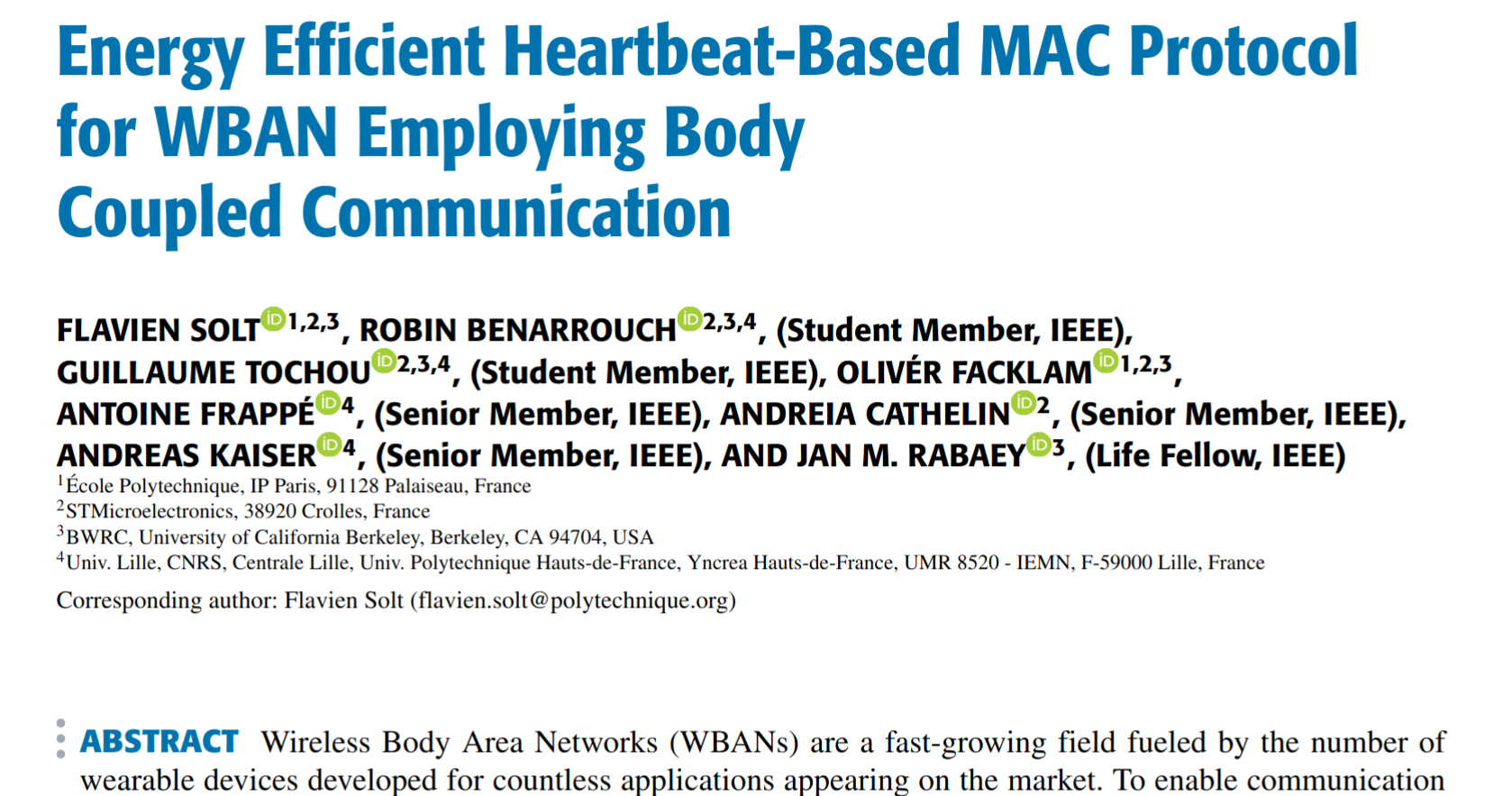3 min to read
HB-Sync
Modeling and Analysis of a Heartbeat-Based Synchronization Scheme for the Human Intranet.
Wireless Body Area Networks (WBANs) promise seamless connectivity among body-worn sensors and actuators—enabling everything from continuous health monitoring to brain-machine interfaces. Yet, maintaining synchronization in these networks without draining ultra-low-power nodes has proven difficult. This paper introduces a heartbeat-based synchronization scheme for the “Human Intranet,” using the heart’s own rhythm as a zero-cost timing beacon. By defining each cardiac cycle as a “superframe,” nodes avoid power-hungry in-band beacons or wake-up radios, optimizing channel use, energy, and latency all at once.
The Heartbeat Hack
Instead of transmitting periodic timing beacons, every node’s heartbeat detector triggers a common reset signal, marking the start of a superframe (the interval between successive R-peaks). Within that window, leaves (low-energy sensors) “puncture” the regular hub-to-hub communications to upload data during scheduled slots, while a single listening window at the superframe’s start allows bi-directional control messages.
This in-band “puncture” approach leverages natural physiology as a free, always-on synchronizer—slashing idle listening and beacon overhead.
Hardware Architecture & Modeling

The scheme hinges on three low-power components:
-
Heartbeat Detector: Identifies the R-peak in the ECG signal and resets the timer; draws ≈100 nW.
-
Timer: An oscillator + counter that subdivides each superframe into transmission ticks. Its inaccuracy over time arises from:
-
Offset Frequency (Δtₒᵢₙₛₑₜ): One calibration-bounded oscillator period.
-
Frequency Drift (Δt_drift): Deterministic drift at 500 ppm, accumulating as Driftₒₛc·t.
-
Random Jitter (Δt_jitter): Gaussian noise, bounded and covering > 99.993% of cases.
-
-
Transceiver: Power modeled by Tx energy = DR·Eₜₓ and Rx by listening-window duration·Prx.
Three performance metrics capture scheme efficiency under both ideal and realistic timing:
-
Channel Availability (CA): Hub-to-hub airtime fraction, degraded by total wait time (t_w) due to sync margins.
-
System Power (P): Sum of heartbeat-detector, timer, Tx, and Rx contributions over the superframe.
-
Latency: Time from data ready to its transmission—zero extra overhead since slots align to the heartbeat.
Performance Highlights
Using conservative hardware values and a 2-node scenario, simulations reveal:
-
Power Consumption: Preal rises from ≈300 µW to 1.2 mW as superframe T grows from 300 ms to 1.5 s.
-
Channel Availability: CAreal stays above 92–97% for detached-leaf latencies of 50 ms and 200 ms, thanks to tight sync margins.
Comparison with Duty-Cycled Receivers
Against a classic duty-cycled Rx (leaves wake randomly for beacons), HB-MAC shows:
-
26–40% lower power for similar latency requirements (50 ms/200 ms), even at the duty-cycle’s optimal <10% point.
-
Higher CA at low duty-cycles (<10%), and tighter, predictable latency versus unpredictable duty-cycle delays.
Why It Matters
By co-opting the heartbeat as a universal clock, HB-MAC delivers:
-
Ultra-Low Power: No in-band beacon transmissions, minimal idle listening.
-
High Channel Efficiency: 92–97% availability even with detached event-driven traffic.
-
Latency Control: Zero extra coordination delay per superframe.
This combination suits critical WBAN applications—smart prosthetics, neural interfaces, and life-support devices—that demand both energy thrift and responsive communication.
Looking Ahead
Future work includes integrating detailed attached-leaf protocols, refining inter-hub mesh scheduling, and developing upper-layer algorithms for dynamic cluster reconfiguration. Such advances will further unlock truly autonomous, body-centric networks powered by your own heartbeat.
Acknowledgments
We would like to thank STMicroelectronics and the BWRC for their support in this work.
